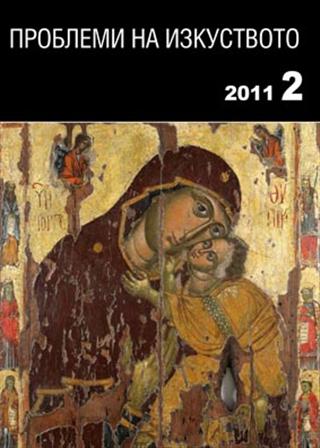Надписът от олтарната абсида на търновската митрополитска църква „Св. св. Петър и Павел”
The Inscription in the Altar Apse of the „Sts Peter and Paul” Bishopric Church in Veliko Tarnovo
Author(s): Ivan Tyutyundhziev, Plamen Sabev, Emmanuel MoutafovSubject(s): Fine Arts / Performing Arts
Published by: Институт за изследване на изкуствата, Българска академия на науките
Summary/Abstract: In the context of the latest research, grounding on the contemporary analysis of the frescoes it was assumed that the second layer of murals in the „Sts. Peter and Paul” church was fulfilled in the 60’s of the 15th century. This period coincides with the last years of the life and the activity of bishop ignatius of Tarnovo who chaired the episcopacy before 1435-1464. In the present study the authors are making analysis of an inscription which ends in mystic signs, entwined in a whole. The inscription is preserved in the altar apse. In fact the greek inscription in the apse is interpreting and adding to the old bulgarian „Изрядно о Пресвятый” (immaculately about the Holiest) with a signature of the donor-hierarch: […(ΥΠΕΡ?)Ε ΥΛ ΟΓΗ]ΜΕΝΗC ΔΕCΠΟΙΝΗC ΗΜΩΝ Θ(ΕΟΤΟ)ΚΟΥ Κ΄ ΑΕΙΠΑΡΘΕΝΟΥ ΜΑΡΙΑC, and after it there is an entwined cryptograph whose interpretation, according to us is: ΜΗΤΡΟΠΟΛΙΤΗС ΙΓΝΑΤΙΟС ΤΥΡΝΟΒ[ΟΥ]. In translation this is “to the most gracious Holy Virgin Maria, bishop ignatius of tarnovo”. For the period of 14th – 15th centuries this type of cryptographs were typical and furthermore this was the most usual signature (common usually in known me- dieval manuscripts) of any representative of the political or spiritual authority of byzantium. the signature itself is borrowed and depicted there in order to mention the bishop’s name in the liturgy. With this correct interpretation e. Moutafov and his colleagues are declining the old thesis that it is the signature of “icon painter nickolas”. The name mentioned there is that of ignatius who most probably is the commissioner of the wall-paintings in the 60’s of the 15th century. Logically in the tarnovo cathedral church they wrote the bishop’s name in greek language not only because the previous citing is in the same language. Despite the inscriptions on the murals which are in bulgarian, the name of ignatius should be written in the only language that is officially recognized by the jurisdiction of Constantinople, as a symbol of obedience to the Universal patriarch and an expression of the community to the orthodoxy.
Journal: Проблеми на изкуството
- Issue Year: 2011
- Issue No: 2
- Page Range: 42-47
- Page Count: 6
- Language: Bulgarian
- Content File-PDF

